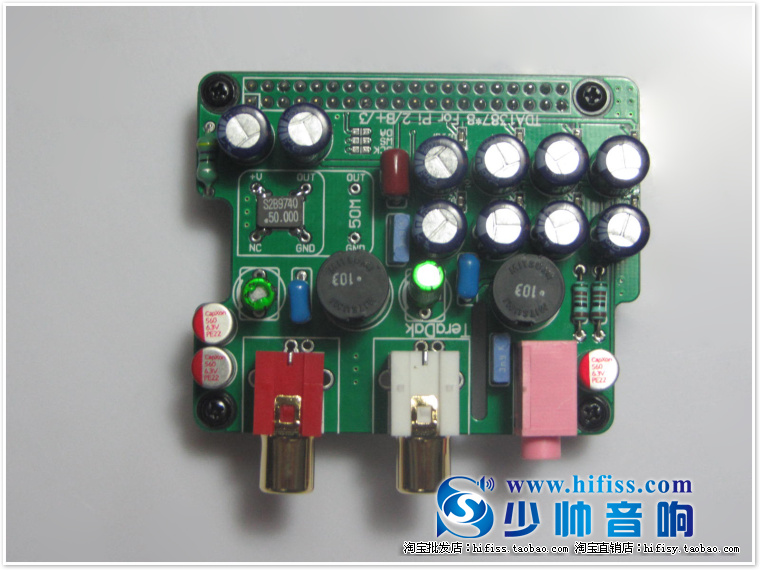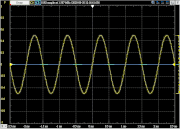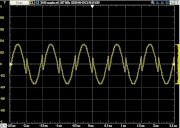It Works !
Thank you Junz,
I already had ordered the Phillips Capacitors.
Checked the polarity, you are correct positive towards DAC. Back in business!
Thanks
Try ECAS http://www.murata.com/~/media/webre.../catalog/products/capacitor/polymer/c90e.ashx
Sound quality as with black gates.
for example - 22 uF 16 V
You can measure the polarity. As a rule, it is positive from the side of DAC
Thank you Junz,
I already had ordered the Phillips Capacitors.
Checked the polarity, you are correct positive towards DAC. Back in business!
Thanks
I have couple of questions regarding mods:
1. Increase Decoupling of Analog Stage
It is recommended to use several 820uf/35V low ESR caps. I saw people use from 2 to 6 caps here - can I use less caps with higher capacitance ? What total capacitance is optimal (still fitting inside original case) ?
2.Increase TDA1387 Chip Supply Capacitance
Abraxalito and some other people use 4x15000uF 6.3V caps here, some use just one (but unknown capacitance due to making pics from top). It's hard to squeeze such large caps here, what minimal total capacitance should be target here ?
3. Caps mentioned above should be audio grade or regular ones are ok ?
4. In later versions of this DAC there are two blue round caps on output (just before sockets) - is there need to replace them with some other caps ?
🙂
1. Increase Decoupling of Analog Stage
It is recommended to use several 820uf/35V low ESR caps. I saw people use from 2 to 6 caps here - can I use less caps with higher capacitance ? What total capacitance is optimal (still fitting inside original case) ?
2.Increase TDA1387 Chip Supply Capacitance
Abraxalito and some other people use 4x15000uF 6.3V caps here, some use just one (but unknown capacitance due to making pics from top). It's hard to squeeze such large caps here, what minimal total capacitance should be target here ?
3. Caps mentioned above should be audio grade or regular ones are ok ?
4. In later versions of this DAC there are two blue round caps on output (just before sockets) - is there need to replace them with some other caps ?
🙂
Question: are there any drivers necessary to run this DAC though USB? I cannot see it with either win or linux machines.
I think there's more than one kind of USB interface circuit which plugs into this DAC. If the interface chip is CM108 or PCM2706 then no driver is needed. You do need to have the (optional) PCB plugged in or you'll see nothing. The standard DAC does have a USB socket but no PCB installed.
I think there's more than one kind of USB interface circuit which plugs into this DAC. If the interface chip is CM108 or PCM2706 then no driver is needed. You do need to have the (optional) PCB plugged in or you'll see nothing. The standard DAC does have a USB socket but no PCB installed.
Ha! thank you. I now notice there's a very empty socket for "USB input".
I wonder how I could misinterpret the listing so as to not choose one with USB.
Is there an easy way of obtaining that or should I look into using the coax or toslink instead?
I've modded a few of these and found the USB interface circuit socket doesn't have very good layout. Meaning that the USB interface board contributes noise to the audio so I wouldn't recommend using the USB input. Rather use an external USB-> S/PDIF converter like this one : CM6631A???? USB?I2S/SPDIF???? 32/24Bit 192K??DAC-???
I got the stock model running with external toslink converter, and I'm pretty disappointed with the sound being ridicolously bass heavy. Will the mods do anything in that regard?
Doesn't sound like the DAC I had. Could be that the perception of bass-heaviness is a result of the lack of HF - the stock design doesn't correct for NOS droop. Try running it with 2X OS before the toslink converter to see if it sounds more balanced.
I plan on ordering the blue option of the dac from taobao, but am wondering what is the best way to get the 220v version in the US. And also just to clarify, I will also need to purchase the transformers, heatsinks and USB board to get the dac functioning. I plan on designing a 3d printed enclosure for it.
Just found this thread... and this hat on the net: Raspberry pi2 B3 B+ decoder DAC TDA1387 1PPM active crystal expansion board I2S | eBay
Does it worth the price in 2020?
Is it clear finally, why is the clock generator there on the panel? IS it a master clock for I2S?
Does it worth the price in 2020?
Is it clear finally, why is the clock generator there on the panel? IS it a master clock for I2S?
Bonjour, je suis également intéressé par la réponse et remercie les personnes possédant ce dac ou à base de 8x tda1387.
Meilleures salutations
Meilleures salutations
TDA1387 Xo freq.
The eBay product below shows the XO = 50.00 mhz.
Is there clock division being done somewhere?


The TDA1387 supposedly has a max XO freq. of 18.4Mz (datasheet).Just found this thread... and this hat on the net: Raspberry pi2 B3 B+ decoder DAC TDA1387 1PPM active crystal expansion board I2S | eBay
The eBay product below shows the XO = 50.00 mhz.
Is there clock division being done somewhere?


From my memory of this board, the 50MHz osc is being used as an asynchronous reclock. Its feeding into the clock input of an LVC574 (or similar) clocked latch through which the DAC's digital inputs are passed.
The R-ch of my L1387 is having heavy distortion. I tried to swap the op-amp, and the distortion remains at the R-ch. When there is no music playing, there is no crackling or noise. I have captured the output of 1kHz sine wave with a scope. The normal L-ch is like this:

The problem R-ch is like this:

I suspect that some of the TDA1387 chips have broken. Could there be other possible cause for the problem? Any suggestion is welcomed.

The problem R-ch is like this:

I suspect that some of the TDA1387 chips have broken. Could there be other possible cause for the problem? Any suggestion is welcomed.
I've never seen a signal looking like that before out of a DAC. It can't hurt to check the DAC chips - if the pin7s aren't all connected together, try shorting pin7 on each to 0V one by one to see if this problem is caused by just one chip.
- Home
- diyaudio.com Wiki
- TDA1387 X8 NOS DAC